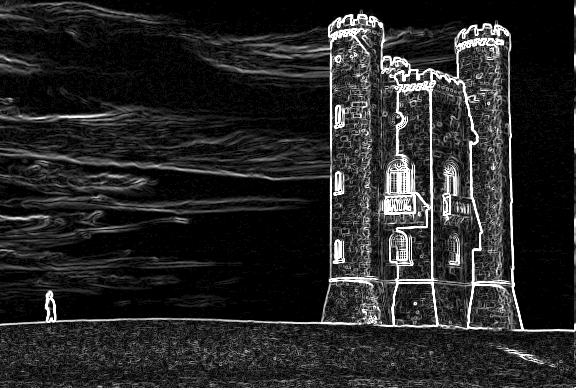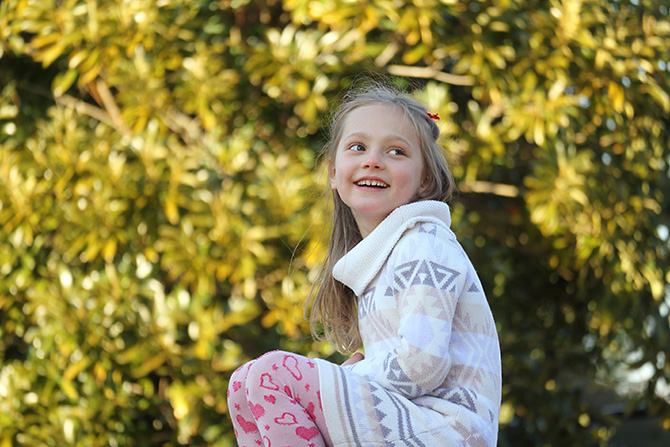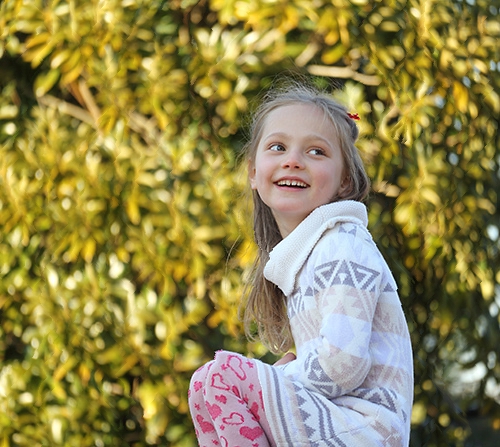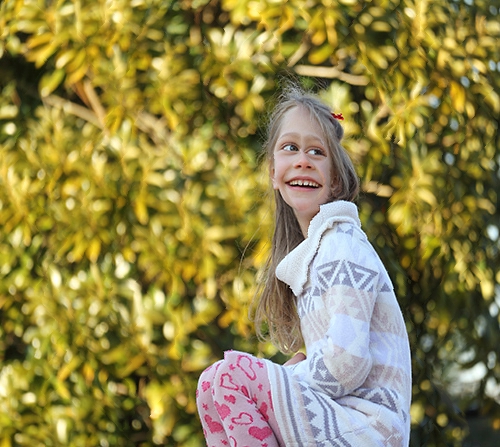Top Related Projects
A caching, resizing image proxy written in Go
Fast, simple, scalable, Docker-ready HTTP microservice for high-level image processing
An image resizing server written in Go
thumbor is an open-source photo thumbnail service by globo.com
High performance Node.js image processing, the fastest module to resize JPEG, PNG, WebP, AVIF and TIFF images. Uses the libvips library.
Fast and secure standalone server for resizing and converting remote images
Quick Overview
Caire is a content-aware image resizing library implemented in Go. It uses the seam carving technique to resize images while preserving important content and features. This library allows for intelligent image scaling without distorting key elements in the image.
Pros
- Preserves important image content during resizing
- Supports both image enlargement and reduction
- Offers command-line interface and programmatic usage
- Provides face detection to protect facial features during resizing
Cons
- Can be slower than traditional resizing methods for large images
- May produce artifacts in some complex images
- Limited file format support compared to more comprehensive image processing libraries
- Requires Go programming knowledge for advanced usage
Code Examples
- Basic image resizing:
package main
import "github.com/esimov/caire"
func main() {
c := caire.NewCarver(width, height)
c.Process(input, output)
}
- Resizing with face detection:
c := caire.NewCarver(width, height)
c.FaceDetect = true
c.Process(input, output)
- Enlarging an image:
c := caire.NewCarver(width, height)
c.Enlargement = true
c.Process(input, output)
Getting Started
To use Caire in your Go project:
-
Install the library:
go get -u github.com/esimov/caire -
Import it in your code:
import "github.com/esimov/caire" -
Create a new Carver and process an image:
c := caire.NewCarver(800, 600) err := c.Process("input.jpg", "output.jpg") if err != nil { log.Fatal(err) }
This example resizes the input image to 800x600 pixels while preserving important content.
Competitor Comparisons
A caching, resizing image proxy written in Go
Pros of imageproxy
- Focuses on image resizing, cropping, and caching, providing a more comprehensive image manipulation solution
- Supports multiple image sources, including remote URLs and local files
- Offers flexible URL-based API for easy integration with existing systems
Cons of imageproxy
- Lacks advanced content-aware image resizing capabilities
- Does not provide intelligent object detection or removal features
- May require more setup and configuration for complex use cases
Code Comparison
imageproxy:
func (t *Transform) String() string {
parts := make([]string, 0, 7)
if t.Width != 0 {
parts = append(parts, fmt.Sprintf("w%d", t.Width))
}
if t.Height != 0 {
parts = append(parts, fmt.Sprintf("h%d", t.Height))
}
return strings.Join(parts, ",")
}
caire:
func Resize(img image.Image, width, height int, debug bool) (*image.NRGBA, error) {
c := NewCarver(img, width, height)
c.ComputeSeams(width, height)
return c.Resize(width, height)
}
The code snippets show that imageproxy focuses on string-based transformation parameters, while caire implements content-aware resizing algorithms directly on image data.
Fast, simple, scalable, Docker-ready HTTP microservice for high-level image processing
Pros of imaginary
- Supports a wide range of image processing operations beyond resizing
- Provides a microservice architecture with HTTP API for easy integration
- Offers multiple storage backends (File System, AWS S3, Google Cloud Storage)
Cons of imaginary
- Requires more setup and infrastructure compared to caire
- May have higher resource usage due to its comprehensive feature set
- Less focused on content-aware image resizing specifically
Code comparison
caire:
processor := caire.NewCarver(width, height)
processor.NewWidth = newWidth
processor.NewHeight = newHeight
processor.Process(input, output)
imaginary:
curl -O input.jpg http://server.com/image.jpg
curl -H "Authorization: API_KEY" \
-F "file=@input.jpg" \
-F "width=300" \
-F "height=200" \
http://localhost:8088/resize
Summary
While caire focuses specifically on content-aware image resizing, imaginary offers a broader range of image processing capabilities as a microservice. caire is more lightweight and easier to integrate directly into Go applications, while imaginary provides a flexible HTTP API suitable for various programming languages and environments. The choice between the two depends on the specific requirements of the project, such as the need for additional image processing features, scalability, and integration preferences.
An image resizing server written in Go
Pros of picfit
- Supports multiple storage backends (file system, S3, Swift)
- Offers a wider range of image processing operations (resize, thumbnail, rotate, etc.)
- Provides a RESTful API for image manipulation
Cons of picfit
- Less focus on content-aware image resizing
- May require more setup and configuration
- Doesn't use AI or advanced algorithms for image analysis
Code Comparison
picfit (HTTP handler for image resizing):
func ImageHandler(ctx *Context, req *http.Request) error {
file, err := ctx.Store.Get(ctx.Key, ctx.Path)
if err != nil {
return err
}
return ctx.Operation.Run(file, ctx.Response)
}
caire (Content-aware image resizing):
func Resize(img image.Image, width, height int) (image.Image, error) {
c := NewCarver(img, width, height)
return c.Resize()
}
The code snippets show that picfit focuses on handling HTTP requests and performing various image operations, while caire specializes in content-aware image resizing using seam carving techniques.
thumbor is an open-source photo thumbnail service by globo.com
Pros of Thumbor
- More comprehensive image processing solution with a wide range of features
- Supports multiple storage backends and caching mechanisms
- Highly scalable and suitable for large-scale deployments
Cons of Thumbor
- More complex setup and configuration compared to Caire
- Requires additional server infrastructure to run
- May be overkill for simple content-aware image resizing tasks
Code Comparison
Thumbor (Python):
from thumbor.handlers.imaging import ImagingHandler
class MyHandler(ImagingHandler):
def get(self):
# Custom image processing logic
super(MyHandler, self).get()
Caire (Go):
package main
import "github.com/esimov/caire"
func main() {
caire.Process("input.jpg", "output.jpg", params)
}
Thumbor offers a more extensible framework for custom image processing, while Caire provides a simpler, focused approach to content-aware image resizing. Thumbor's code allows for greater customization within its ecosystem, whereas Caire's usage is more straightforward for its specific purpose.
High performance Node.js image processing, the fastest module to resize JPEG, PNG, WebP, AVIF and TIFF images. Uses the libvips library.
Pros of Sharp
- Faster image processing due to libvips library
- Wider range of image manipulation features
- Better documentation and community support
Cons of Sharp
- Larger package size and more dependencies
- Steeper learning curve for beginners
- Less focused on content-aware image resizing
Code Comparison
Sharp:
sharp(inputBuffer)
.resize(300, 200)
.toFile('output.jpg', (err, info) => {
// Handle result
});
Caire:
caire.New().
Width(300).
Height(200).
Process("input.jpg", "output.jpg")
Sharp offers a more flexible API with chaining methods, while Caire provides a simpler, more focused approach for content-aware resizing. Sharp's code is typically more verbose but offers greater control over image processing operations. Caire's code is more concise and specifically tailored for content-aware resizing tasks.
Both libraries have their strengths, with Sharp excelling in general-purpose image processing and Caire specializing in intelligent resizing. The choice between them depends on the specific requirements of your project and the level of control you need over image manipulation tasks.
Fast and secure standalone server for resizing and converting remote images
Pros of imgproxy
- Supports a wide range of image processing operations beyond just resizing
- Designed for high-performance and scalability in production environments
- Offers extensive configuration options and security features
Cons of imgproxy
- Requires more setup and infrastructure compared to a simple library
- May be overkill for projects that only need basic image resizing
- Less focused on content-aware image resizing
Code Comparison
imgproxy (configuration example):
IMGPROXY_KEY: your_key
IMGPROXY_SALT: your_salt
IMGPROXY_MAX_SRC_RESOLUTION: 50
IMGPROXY_MAX_SRC_FILE_SIZE: 20971520
caire (usage example):
err := caire.Process("input.jpg", "output.jpg", params)
if err != nil {
log.Fatal(err)
}
Summary
imgproxy is a full-featured image processing server designed for production use, offering a wide range of operations and configuration options. caire, on the other hand, is a specialized library focused on content-aware image resizing. While imgproxy provides more versatility and scalability, caire offers a simpler solution for projects specifically requiring intelligent image resizing.
Convert  designs to code with AI
designs to code with AI

Introducing Visual Copilot: A new AI model to turn Figma designs to high quality code using your components.
Try Visual CopilotREADME
Caire is a content aware image resize library based on Seam Carving for Content-Aware Image Resizing paper.
How does it work
- An energy map (edge detection) is generated from the provided image.
- The algorithm tries to find the least important parts of the image taking into account the lowest energy values.
- Using a dynamic programming approach the algorithm will generate individual seams across the image from top to down, or from left to right (depending on the horizontal or vertical resizing) and will allocate for each seam a custom value, the least important pixels having the lowest energy cost and the most important ones having the highest cost.
- We traverse the image from the second row to the last row and compute the cumulative minimum energy for all possible connected seams for each entry.
- The minimum energy level is calculated by summing up the current pixel value with the lowest value of the neighboring pixels obtained from the previous row.
- We traverse the image from top to bottom and compute the minimum energy level. For each pixel in a row we compute the energy of the current pixel plus the energy of one of the three possible pixels above it.
- Find the lowest cost seam from the energy matrix starting from the last row and remove it.
- Repeat the process.
The process illustrated:
| Original image | Energy map | Seams applied |
|---|---|---|
 |  |  |
Features
Key features which differentiates this library from the other existing open source solutions:
- GUI progress indicator
- Customizable command line support
- Support for both shrinking or enlarging the image
- Resize image both vertically and horizontally
- Face detection to avoid face deformation
- Support for multiple output image type (jpg, jpeg, png, bmp)
- Support for
stdinandstdoutpipe commands - Can process whole directories recursively and concurrently
- Use of sobel threshold for fine tuning
- Use of blur filter for increased edge detection
- Support for squaring the image with a single command
- Support for proportional scaling
- Support for protective mask
- Support for removal mask
- GUI debug mode support
Install
First, install Go, set your GOPATH, and make sure $GOPATH/bin is on your PATH.
$ go install github.com/esimov/caire/cmd/caire@latest
MacOS (Brew) install
The library can also be installed via Homebrew.
$ brew install caire
Usage
$ caire -in input.jpg -out output.jpg
Supported commands:
$ caire --help
The following flags are supported:
| Flag | Default | Description |
|---|---|---|
in | - | Input file |
out | - | Output file |
width | n/a | New width |
height | n/a | New height |
preview | true | Show GUI window |
perc | false | Reduce image by percentage |
square | false | Reduce image to square dimensions |
blur | 4 | Blur radius |
sobel | 2 | Sobel filter threshold |
debug | false | Use debugger |
face | false | Use face detection |
angle | float | Plane rotated faces angle |
mask | string | Mask file path |
rmask | string | Remove mask file path |
color | string | Seam color (default #ff0000) |
shape | string | Shape type used for debugging: circle,line (default circle) |
Face detection
The library is capable of detecting human faces prior resizing the images by using the lightweight Pigo (https://github.com/esimov/pigo) face detection library.
The image below illustrates the application capabilities for human face detection prior resizing. It's clearly visible that with face detection activated the algorithm will avoid cropping pixels inside the detected faces, retaining the face zone unaltered.
| Original image | With face detection | Without face detection |
|---|---|---|
 |  |  |
GUI progress indicator

A GUI preview mode is also incorporated into the library for in time process visualization. The Gio GUI library has been used because of its robustness and modern architecture. Prior running it please make sure that you have installed all the required dependencies noted in the installation section (https://gioui.org/#installation) .
The preview window is activated by default but you can deactivate it any time by setting the -preview flag to false. When the images are processed concurrently from a directory the preview mode is deactivated.
Face detection to avoid face deformation
In order to detect faces prior rescaling, use the -face flag. There is no need to provide a face classification file, since it's already embedded into the generated binary file. The sample code below will resize the provided image with 20%, but checks for human faces in order tot avoid face deformations.
For face detection related settings please check the Pigo documentation.
$ caire -in input.jpg -out output.jpg -face=1 -perc=1 -width=20
Support for stdin and stdout pipe commands
You can also use stdin and stdout with -:
$ cat input/source.jpg | caire -in - -out - >out.jpg
in and out default to - so you can also use:
$ cat input/source.jpg | caire >out.jpg
$ caire -out out.jpg < input/source.jpg
You can provide also an image URL for the -in flag or even use curl or wget as a pipe command in which case there is no need to use the -in flag.
$ caire -in <image_url> -out <output-folder>
$ curl -s <image_url> | caire > out.jpg
Process multiple images from a directory concurrently
The library can also process multiple images from a directory concurrently. You have to provide only the source and the destination folder and the new width or height in this case.
$ caire -in <input_folder> -out <output-folder>
Support for multiple output image type
There is no need to define the output file type, just use the correct extension and the library will encode the image to that specific type.
Other options
In case you wish to scale down the image by a specific percentage, it can be used the -perc boolean flag. In this case the values provided for the width and height are expressed in percentage and not pixel values. For example to reduce the image dimension by 20% both horizontally and vertically you can use the following command:
$ caire -in input/source.jpg -out ./out.jpg -perc=1 -width=20 -height=20 -debug=false
Also the library supports the -square option. When this option is used the image will be resized to a square, based on the shortest edge.
When an image is resized on both the X and Y axis, the algorithm will first try to rescale it prior resizing, but also will preserve the image aspect ratio. The seam carving algorithm is applied only to the remaining points. Ex. : given an image of dimensions 2048x1536 if we want to resize to the 1024x500, the tool first rescale the image to 1024x768 and then will remove only the remaining 268px.
Masks support:
-mask: The path to the protective mask. The mask should be in binary format and have the same size as the input image. White areas represent regions where no seams should be carved.-rmask: The path to the removal mask. The mask should be in binary format and have the same size as the input image. White areas represent regions to be removed.
| Mask | Mask removal |
|---|---|
Caire integrations
- Caire can be used as a serverless function via OpenFaaS: https://github.com/esimov/caire-openfaas
- Caire can also be used as a
snapfunction (https://snapcraft.io/caire):$ snap run caire --h
Results
Shrunk images
| Original | Shrunk |
|---|---|
 |  |
 |  |
 |  |
 |  |
Enlarged images
| Original | Extended |
|---|---|
 |  |
 |  |
Useful resources
- https://en.wikipedia.org/wiki/Seam_carving
- https://inst.eecs.berkeley.edu/~cs194-26/fa16/hw/proj4-seamcarving/imret.pdf
- http://pages.cs.wisc.edu/~moayad/cs766/download_files/alnammi_cs_766_final_report.pdf
- https://stacks.stanford.edu/file/druid:my512gb2187/Zargham_Nassirpour_Content_aware_image_resizing.pdf
Author
- Endre Simo (@simo_endre)
License
Copyright © 2018 Endre Simo
This project is under the MIT License. See the LICENSE file for the full license text.
Top Related Projects
A caching, resizing image proxy written in Go
Fast, simple, scalable, Docker-ready HTTP microservice for high-level image processing
An image resizing server written in Go
thumbor is an open-source photo thumbnail service by globo.com
High performance Node.js image processing, the fastest module to resize JPEG, PNG, WebP, AVIF and TIFF images. Uses the libvips library.
Fast and secure standalone server for resizing and converting remote images
Convert  designs to code with AI
designs to code with AI

Introducing Visual Copilot: A new AI model to turn Figma designs to high quality code using your components.
Try Visual Copilot



